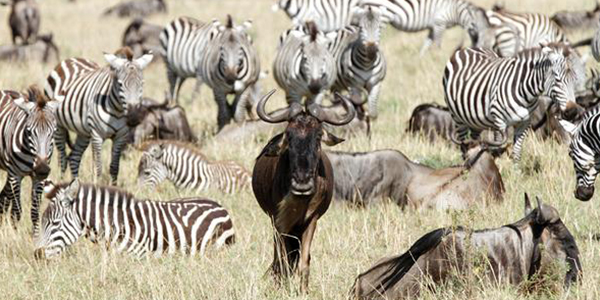19th January, 2018 15:28:10
In the coming months, Southern Serengeti and Ndutu areas will be a sight of thousands of babies being born to the thousands of wildebeest during the calving season. This natural phenomenon is truly a miracle of nature attracting not just adventure seekers, but also researchers and zoological scientist from all over the world.

The herds have started to make their way back down to the southern part of Serengeti to feed on the short green grass of the plains. By late January and early February, one can witness the great spectacle of thousands of baby wildebeest being born every day during the peak of the season. It is truly spectacular to watch a baby wildebeest up and about and running minutes after being born.
During this time the predators of Africa, namely lions, hyenas and cheetah show up in large numbers, lying in wait for that perfect time to pounce on their prey. But the mother wildebeest aren’t about to let these predators have a feast if they can help it, and instinctively either head to the short grass where the views are better to avoid the predators and also form a circle around birthing mothers to protect them when they are most vulnerable. Not all the calves will survive thought, as a great number of them, if they don’t become a meal for the predators that are following them, they may drown crossing the Mara River during their journey north again.
The calving season is full of adventure and a lot of action. It’s all part of nature and a trip to Southern Serengeti this time of the year can be quite rewarding.
6 Days, 5 Nights Travel Trip
Welcome to Dubai, a city of grandeur, luxury and innovation. Known for its ...
6 Days, 5 Nights Travel Trip
Welcome to Dubai, a city of luxury, innovation, and endless possibilities. ...
6 Days, 5 Nights Travel Trip
Welcome to the bustling city of Dubai, an extraordinary fusion of modern lu...
3 Days, 2 Nights Travel Trip
EAST AFRICAN RESIDENT SPECIAL OFFER - Celebrate love in the heart of the wi...
Stay updated with our latest news!